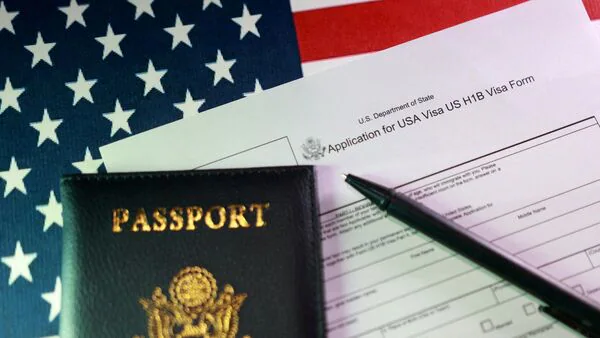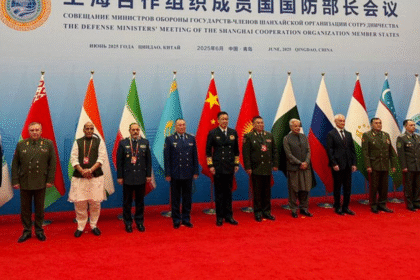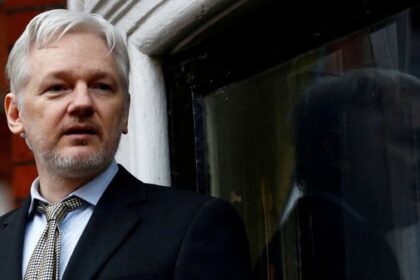After $100,000 H-1B Visa Fee Hike, Trump Administration Plans to Scrap Lottery Process
The H-1B visa has long been at the center of debates on U.S. immigration policy, technology jobs, and global workforce mobility. For decades, it has served as a gateway for highly skilled professionals, especially in the technology sector, to contribute to the American economy. Now, with the Donald Trump administration signaling a $100,000 H-1B visa fee hike along with plans to abolish the lottery system, the landscape of skilled immigration could undergo a seismic shift.
This development has sparked intense discussions among businesses, policymakers, and international workers. For many companies in Silicon Valley and beyond, the H-1B program is not just about filling jobs—it represents innovation, global competitiveness, and access to specialized skills. But for critics, it is a system that has been exploited, sometimes at the expense of domestic workers.
Understanding the H-1B Visa: A Brief Background
The H-1B visa is a non-immigrant visa that allows U.S. companies to employ foreign workers in specialty occupations requiring technical expertise. Professions like engineering, IT, finance, medicine, and academia have relied heavily on this visa category.
- Each year, 65,000 visas are made available, with an additional 20,000 reserved for advanced degree holders from U.S. institutions.
- Because applications far exceed the cap, the lottery system has been used to randomly select applicants.
- Countries like India and China dominate the pool, with Indian IT professionals forming the largest share of beneficiaries.
Over time, the H-1B program has become synonymous with globalization of talent. Yet, it has also been at the center of political controversies around immigration reform, wage protection, and fairness.
The Trump Administration’s Proposal: Two Major Changes
The latest proposal includes two significant policy shifts:
- A $100,000 H-1B Visa Fee Hike
- Currently, filing fees are already substantial, often ranging between $6,000 to $12,000 depending on the employer and attorney costs.
- A sudden increase to $100,000 per application would place enormous financial pressure on employers, especially startups and mid-sized companies.
- This could effectively price out smaller businesses, leaving only large corporations able to afford foreign hires.
- Scrapping the Lottery Process
- Instead of a random selection system, the administration is considering merit-based allocation.
- Factors such as salary levels, job categories, and skill sets could become the criteria for awarding visas.
- The move would favor highly paid roles and advanced degree holders while reducing opportunities for entry-level or mid-level skilled workers.
These twin changes, if implemented, would radically transform how foreign professionals enter the U.S. workforce.
Why This Matters Globally
The U.S. has been a magnet for global talent, particularly in technology. A drastic visa fee hike combined with a merit-only system could:
- Reshape global migration patterns as professionals look toward Canada, Europe, or Australia for opportunities.
- Impact India’s IT sector, which sends tens of thousands of engineers and consultants to the U.S. annually.
- Redefine innovation ecosystems, as startups reliant on affordable skilled talent may struggle to survive.
- Influence bilateral relations, as countries like India may raise concerns over restrictive immigration practices.
In essence, this is not just a domestic policy move—it is a decision with international consequences.
Reactions from the Tech Industry
Unsurprisingly, the U.S. technology sector has expressed serious concerns. Many leading companies, from Silicon Valley giants to fast-growing startups, rely on H-1B professionals to fill skill gaps.
Executives argue that:
- A $100,000 fee hike would stifle innovation.
- It would disproportionately benefit big corporations with deep pockets.
- It could trigger a brain drain, with top talent moving to friendlier immigration destinations.
At the same time, critics of the current system welcome reform. They believe ending the lottery will ensure that only the “best and brightest” come to the U.S., rather than leaving entry purely to chance.
The Trump administration’s proposed overhaul of the H-1B program—through a steep visa fee hike and abolishing the lottery process—has triggered debate about the future of global talent migration, fairness in immigration policy, and the balance between protecting domestic workers and supporting business growth.
As this policy debate unfolds, it is clear that the H-1B visa is no longer just an immigration category; it is a symbol of America’s position in the global talent race.
The Economics of the $100,000 Fee Hike
The proposed $100,000 fee per H-1B application is not just a policy adjustment—it represents a fundamental shift in the economics of skilled immigration.
Currently, the cost of applying for an H-1B visa ranges from $6,000 to $12,000, depending on legal services, filing charges, and compliance obligations. For a small or mid-sized company, even this is a significant financial burden. Raising the figure nearly tenfold changes the equation completely.
Key economic takeaways include:
- Barrier to Entry for Startups: Small firms, which often rely on specialized foreign workers, may simply be unable to afford such fees.
- Monopoly of Large Corporations: Tech giants with deep financial reserves could continue hiring, consolidating their dominance in the industry.
- Reduction in Applications: Employers may drastically cut back on filings, leading to fewer opportunities for international professionals.
Impact on Employers: Startups vs. Tech Giants
The H-1B program has historically allowed both startups and established companies to access talent. But the fee hike introduces a clear divide.
- Startups & SMEs (Small and Medium Enterprises):
These firms typically operate on tight budgets. For them, a $100,000 visa application could mean sacrificing a significant portion of their operational costs. This could force many to:- Avoid hiring foreign workers altogether.
- Shift operations overseas where talent is more accessible.
- Close opportunities that might have led to breakthrough innovations.
- Tech Giants (Google, Amazon, Microsoft, etc.):
For multi-billion-dollar corporations, the increased fee, while substantial, is still manageable. These firms may even welcome the policy change, as it reduces competition for talent by pushing smaller rivals out of the H-1B hiring race.
This creates a scenario where innovation ecosystems—often driven by smaller, disruptive firms—could be stifled in favor of established monopolies.
Shifting Hiring Practices in the U.S.
If the fee hike is implemented, employers may adopt new hiring strategies, including:
- Prioritizing Domestic Workers
Companies may be pressured to rely more on U.S.-born workers, even if there is a skills gap. While this aligns with the “America First” agenda, it risks creating labor shortages in highly specialized areas such as artificial intelligence, data science, and cloud computing. - Nearshoring and Offshoring
Instead of bringing talent to the U.S., companies may relocate operations abroad—to Canada, Mexico, Eastern Europe, or India. This could paradoxically reduce U.S. job creation rather than protect it. - Selective Immigration Investment
With the lottery being replaced by merit-based selection, companies will prioritize highly paid, senior-level hires rather than entry-level graduates. This means fewer opportunities for young professionals starting their careers in the U.S.
Broader Economic Ripple Effects
The visa fee hike won’t just affect companies and applicants—it has wider consequences for the U.S. economy:
- Higher Costs of Innovation: With fewer affordable talent pipelines, research and product development may slow.
- Reduced Global Competitiveness: Countries like Canada and Australia, with friendlier visa regimes, may attract the very talent the U.S. is shutting out.
- Pressure on Universities: U.S. universities rely on international students who hope to transition into H-1B jobs. If opportunities shrink, enrollment could decline, affecting higher education revenue streams.
- Shift in Global Perception: America may be seen as less welcoming to skilled migrants, altering its reputation as the world’s innovation hub.
Industry Reactions So Far
Initial responses from the tech industry and business chambers suggest alarm:
- Tech Industry Associations warn of “talent bottlenecks” and slowed innovation.
- Startup Founders fear being priced out of the global talent market.
- Economists predict an eventual rise in outsourcing, undermining the very jobs the policy claims to protect.
On the other hand, some political voices argue that higher fees discourage misuse of the visa system and ensure only the most serious employers participate.
The economic impact of a $100,000 H-1B visa fee hike would be profound, reshaping who can afford to hire international talent and how businesses plan their future workforce. While larger corporations may adapt, startups and smaller companies risk being sidelined, potentially slowing down America’s innovation engine.
The policy thus raises a critical question: Is the goal to reform the system for fairness, or to restrict it in ways that could undermine U.S. competitiveness?
India has historically been the largest beneficiary of H-1B visas, with over 70% of recipients coming from Indian IT and engineering backgrounds. For decades, Indian professionals have played a central role in powering Silicon Valley, Wall Street, and U.S. healthcare.
The proposed $100,000 fee hike and lottery removal could drastically alter this flow:
- IT Services Companies: Major Indian firms like TCS, Infosys, and Wipro rely heavily on the H-1B program to place consultants in U.S. offices. Increased costs may force them to scale back operations or pass expenses on to clients.
- Individual Professionals: Young engineers aspiring for U.S. careers may reconsider their plans, turning instead to Canada, Europe, or Australia.
- Remittances: Reduced placements would cut into the billions of dollars Indian workers send home each year, affecting the Indian economy at large.
The Indian government has traditionally raised concerns with Washington whenever visa restrictions tighten. This time, diplomatic negotiations may intensify, given the scale of potential disruption.
China and Other Asian Economies
While India dominates H-1B allocations, other countries—especially China, South Korea, and the Philippines—also contribute significant numbers of skilled workers.
- China: Already experiencing strained U.S.-China relations, this move could be perceived as another barrier against Chinese talent. Talented engineers may increasingly prefer Europe or Singapore.
- Philippines & South Korea: Professionals in healthcare and IT may face reduced access to U.S. jobs, slowing their remittance-driven economies.
The long-term effect could be a regional shift in global brain migration, weakening U.S. dominance as the primary destination for Asian professionals.
Canada: The Immediate Beneficiary
One country stands to benefit directly from U.S. restrictions—Canada.
- With its Global Talent Stream visa program, Canada offers fast-track work permits in as little as two weeks.
- Lower costs, friendlier immigration policies, and pathways to permanent residency make it increasingly attractive.
- Canadian cities like Toronto, Vancouver, and Montreal are already emerging as mini tech hubs for global firms.
If the U.S. continues to tighten H-1B access, Canada could position itself as North America’s new innovation leader, siphoning talent away from Silicon Valley.
Europe and Australia: The Rising Alternatives
Europe and Australia are also poised to benefit from any restrictive U.S. policies.
- Germany: With its Blue Card program, Germany actively recruits skilled IT and engineering professionals.
- United Kingdom: Post-Brexit, the U.K. has redesigned its visa system to welcome high-skilled migrants.
- Australia: With a focus on technology and healthcare, Australia remains one of the most immigrant-friendly destinations.
For international workers, these regions provide not just career opportunities but also stability and permanent settlement pathways—something the H-1B system has long been criticized for lacking.
The “Brain Drain” Shift
Traditionally, America has been the dream destination for skilled professionals. But restrictive policies risk triggering a reverse brain drain.
- Top graduates from India and China may choose Canada, Europe, or even stay in their home countries rather than gamble on costly and uncertain U.S. policies.
- Multinational companies may begin expanding R&D centers abroad, following the talent pool instead of relocating workers.
- Over time, this could erode U.S. leadership in fields like artificial intelligence, biotechnology, and quantum computing.
Diplomatic and Trade Implications
Immigration is not just a domestic issue—it has foreign policy consequences.
- Countries like India may pressure the U.S. diplomatically, seeking exemptions or concessions for their professionals.
- Trade negotiations could include visa access as a bargaining chip, complicating broader economic relationships.
- A perception of hostility towards skilled migrants could weaken America’s soft power, especially in regions that have historically admired the “American Dream.”
Global Talent Competition Heats Up
What’s clear is that the world is entering a new era of global talent competition. Nations that create pathways for skilled professionals will:
- Attract innovators.
- Strengthen their economies.
- Build reputations as hubs of opportunity.
If the U.S. raises barriers, rivals are ready to open doors wider. This is not just about immigration—it is about the battle for global innovation leadership.
The Trump administration’s proposed H-1B overhaul will not just reshape the U.S. job market—it will reconfigure global talent flows. India faces the most immediate impact, while Canada, Europe, and Australia could emerge as the biggest winners.
In a globalized economy, talent is mobile. If the U.S. makes entry harder, other nations will welcome those same professionals, potentially shifting the balance of global innovation power.
The “America First” Immigration Agenda
Donald Trump’s presidency has been defined by a strong emphasis on nationalism, protectionism, and immigration control. The proposed changes to the H-1B visa program are not isolated measures—they fit into a broader ideological framework.
“America First” seeks to:
- Prioritize American workers in hiring.
- Reduce reliance on foreign labor.
- Appeal to voters who believe immigration undermines domestic job opportunities.
In this context, the $100,000 fee hike and scrapping the lottery system can be seen as political tools designed to reinforce Trump’s narrative of defending American jobs.
Political Messaging: Protecting U.S. Workers
The administration’s messaging around the reforms highlights:
- Job Security: The claim that too many U.S. workers have been displaced by cheaper foreign labor.
- Fairness: The idea that random lottery allocation is flawed, and merit-based criteria better serve national interests.
- Patriotism: Emphasizing that American companies should “hire American” wherever possible.
These arguments resonate with Trump’s core voter base—particularly in industrial and middle-class regions that feel left behind by globalization.
The Domestic Debate: Two Strong Camps
Inside the U.S., the policy has sparked two powerful, opposing narratives.
- Supporters of Reform
- Argue that companies exploit the H-1B system to bring in cheaper labor.
- Believe that higher fees will discourage misuse and ensure only serious employers hire foreign professionals.
- Support a merit-based system that rewards top talent rather than chance.
- Opponents of Reform
- Warn that the U.S. simply doesn’t have enough domestic talent to meet demand in sectors like AI, cloud computing, and biotech.
- Argue that excessive restrictions will hurt innovation and drive talent abroad.
- Fear that smaller firms and startups will be priced out, leaving innovation concentrated in the hands of big tech monopolies.
The clash of these perspectives highlights a fundamental tension: How can America protect domestic workers without undermining its role as a global innovation hub?
Political Timing and Election Strategy
Policy changes around H-1B visas are also closely tied to election cycles. Immigration is a highly charged issue, and reforms like these allow Trump to:
- Mobilize voter sentiment by appearing tough on immigration.
- Differentiate himself from political rivals who advocate more open immigration systems.
- Position the Republican Party as defenders of the American worker.
The timing of these announcements often coincides with campaign seasons, signaling that immigration remains a core political battleground.
Congressional and Bipartisan Reactions
In Congress, reactions have been mixed:
- Republican lawmakers largely back the administration, framing the reforms as part of protecting American jobs.
- Democrats and moderates warn that the changes could harm the economy and America’s global standing.
- Bipartisan voices from tech-heavy states like California and Washington have pushed back strongly, arguing that Silicon Valley’s growth depends on global talent.
This indicates that the H-1B issue is not simply partisan—it is shaped by regional economics and industry interests.
The Domestic Worker Argument: Myth vs. Reality
A central justification for the reforms is that H-1B workers take away jobs from Americans. But the reality is more complex:
- Studies show that foreign workers often complement, rather than replace, domestic employees by filling gaps in highly technical fields.
- H-1B professionals contribute significantly to innovation, patents, and startups, which create additional jobs for Americans.
- Wage suppression concerns exist but are often linked to abuse by a few outsourcing companies, rather than the system as a whole.
Thus, while the political rhetoric focuses on job protection, the economic data suggests that overly harsh restrictions may harm U.S. workers in the long run.
Trump’s Broader Immigration Record
The H-1B changes fit into a larger immigration pattern under Trump:
- Travel bans targeting specific countries.
- Reduced refugee admissions.
- Stricter rules on student visas and green cards.
Each of these policies reflects a consistent attempt to narrow entry points into the U.S., appealing to nationalist sentiment while sparking global criticism.








